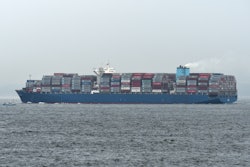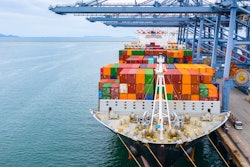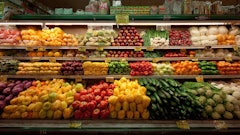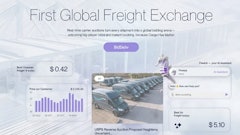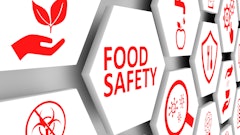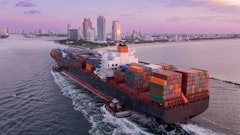
It’s now been four years since supply chain professionals dealt with COVID-19’s nightmarish disruptions and backups. And although the public may not be as aware of product shortages as they were in May 2020, supply chains continue to be tested at both the local and global levels. Tensions in the Middle East are forcing ships to re-route. The collapsed Francis Scott Key bridge in Baltimore has complicated product movement up the Eastern Seaboard. Food logistics professionals in particular are keeping an eye on what’s predicted to be one of the most active hurricane seasons on record, challenging agriculture across the southern states, as well as threatening manufacturing at the height of peak season planning.
Despite the industry’s focus on agility post-pandemic, most businesses still feel disruption will take a toll on their bottom line. A recent Gartner analysis found nearly two-thirds of supply chain professionals expected a loss of revenue when uncertainty arrived vs. just 9% who felt they would weather the storm while improving revenue. Disruption isn’t going to slow down, but the supply chains that aim to be proactive – anticipating change and learning from it – can come out stronger rather than those that invest entirely in response post-disruption.
The food and beverage manufacturers and logistics professionals who stay ahead of the game tend to have three common building blocks to their success.
Track and utilize as much of the data ecosystem as possible
Trends in sales data can be a good indicator of what demand might look like from year to year. However, if a business’ visibility into its supply chain is limited to the nodes under its control, it’s going to miss out on problems brewing outside the four walls. No amount of planning to ship the most in-demand snack will matter if one supplier faces a labor shortage that delays a key ingredient, or a particularly nasty storm destroys a critical crop. This blind spot is far from uncommon. In fact, KPMG found only 13% of businesses have full end-to-end visibility of their supply chain.
Proactive supply chains tend to build “control towers” for all incoming data sources, enabling deeper visibility into how one partner’s performance is impacting all other nodes. Supply chain professionals can then shift production as necessary. For example, if production is moving slower at one facility because of a labor shortage, the control tower makes it easier to find a partner that isn’t impacted and divert manufacturing in their direction. They’re also able to monitor forces beyond their control, such as weather patterns, and stock up on ingredients before a potential disruption.
Communicate well both internally and externally
Data management and visibility can work wonders for supply chains looking to stay ahead of disruption. However, there’s also a human element involved in maintaining these broad partner ecosystems. Every partner has business activities that aren’t visible in the data – say a supplier is changing contracts with farmers next year, potentially impacting a manufacturer’s Q1 outlook.
Proactive supply chains build a culture of collaboration across their partners. They foster an environment where communication is clear and everyone understands that one partner’s success is everybody’s success. Setting up a cadence for phone calls, or even inviting partners in for a brainstorm, can help strengthen relationships and head off conflicts before they become crises.
While external collaboration can make it easier to avoid larger scale disruption and improve end-to-end efficiencies, it does not remove the need to take a proactive approach to internal perspectives as well. For example, forklift drivers may see potential safety hazards. Bringing these team members together with material handling equipment maintenance professionals and operations management for an open discussion on these opportunities offers a diversity of viewpoints for a more well-rounded solution. Apply similar safety improvements at facilities across the supply chain and leverage a multiplier effect.
Invest boldly in technology
The need for supply chain innovation has never been higher, and third-party developers have answered the call. New technologies using artificial intelligence, machine learning, autonomous mobile robots and drones are poised to bring the supply chain untold efficiencies. But while these technologies might look great on paper, there’s always a bit of reticence among more conservative supply chain companies. For example, a company has soaring KPIs to meet, how can it be certain that if this project fails it won’t impact productivity?
Proactive supply chains take a different mindset. They embrace these projects, doing deep research to pick ones that, if proven, will have a significant impact on their unique operations. Then they invest, potentially even giving the developer space within their facilities to run real-world tests. If it’s unsuccessful, the impact is contained. If it’s successful, the business gains leaps and bounds on competitors, and earns a reputation for giving innovators a chance.
There are a number of game-changing pilots in the works for the food and beverage supply chain. New devices are changing the way employees lift heavy pallets with fragile cases of goods, and improving how temperature and road conditions are monitored to ensure food remains fresh before it reaches the store shelves, to name a few. Getting in on the ground level can help businesses prepare for a changing supply chain landscape.
A finger on today’s pulse, an eye for the future
Disruption is a challenge today, and it will evolve in the coming years. Merely responding to it after the fact can minimize damage, but it can’t give a supply chain back the resources already lost. Too many disruptions can set operations back weeks or even months. For the food and beverage supply chain, vigilance is necessary to address problems far before they become headaches.
A supply chain becomes truly proactive when it prioritizes visibility today and embraces preparation for tomorrow. That means getting a grasp of data across their ecosystem, building relationships to fill in the gaps data can’t, and investing in the next generation of supply chain talent. Mixing these ingredients just right will help supply chains weather the storm and come out ahead.





